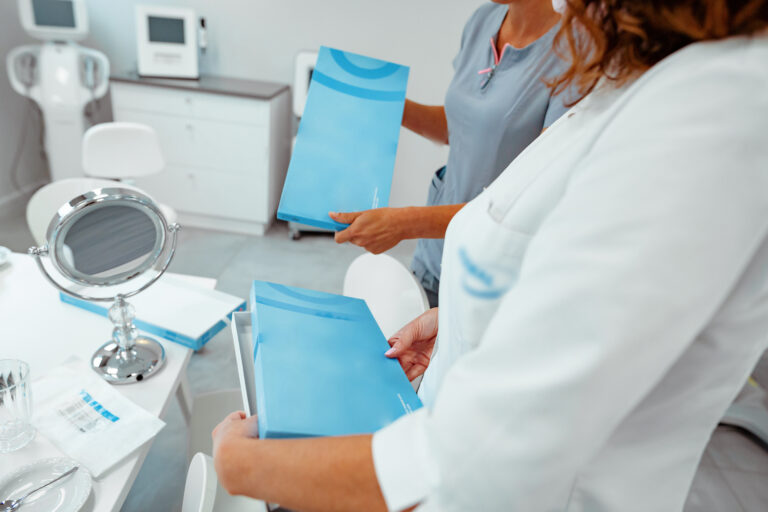The development of aesthetic medicine makes rejuvenating treatments more effective and more accessible. The result is that every year more and more women – and men – decide to take care of their skin condition and restore its younger appearance. A solution often chosen among our patients are lifting threads, the purpose of which is to improve the contours of the face and reduce the signs of aging. What are the advantages of this treatment and to whom is it recommended? What is worth knowing about threads?
Lifting threads are an alternative to a surgical facelift that brings excellent results. The concept of the treatment is not complicated – it consists in implanting solid or absorbable threads under the skin that stimulate collagen synthesis and strengthen sagging skin tissues. They are made of safe material. Absorption of the thread takes about 1.5 to 2 years, however, the lifting and biorevitalization effect of the skin remains much longer. The effect of absorbable threads lasts for 2-3 years, in the case of permanent threads, 3-5 years or even longer.
The treatment with the use of lifting threads has many advantages. These include, among others: safety, immediate and long-lasting effects, threads are not palpable or visible, no incisions or scars, the possibility of repeating the procedure, do not require special preparation by the patient for the procedure, the procedure is not painful, no long convalescence. The procedure using lifting threads is recommended to patients from 30/40 years of age, when the first signs of aging appear. This procedure does not include an upper age limit. What is an indication for its use? Among other things: loss of skin tension and firmness, sagging skin and visible signs of aging, improvement of the face oval, restoration of skin volume around the zygomatic bone, elimination of drooping cheeks, the so-called hamsters; modeling selected parts of the face, including nose, chin, jaw and cheeks.
Threads allow you to lift the facial tissues, but also to moisturize the skin, correct the shape of the nose or chin. Their composition may include hyaluronic acid, affecting revitalization and hydration, which distinguishes these threads from others available on the market.
A wide range of treatment techniques allows you to adjust the treatment to the individual needs of the client. Among the products, there are solid threads made of polypropylene and absorbed threads based on polylactic acid. They differ in length and types, adapting to the anatomical features of various areas of the face and body. You can distinguish, among others:
Threads used for modelling the face and chin. They are equipped with micro-spikes on a spiral plan. They are 15 cm long. Furthermore, they provide an attractive appearance just a few days after the treatment, with minimal damage to the tissues.
The newest threads with a moisturizing effect due to hyaluronic acid and strongly stimulating the production of collagen and elastin. The tabs are attached opposite to each other to form a spiral. They are most often used on the cheeks, forehead and neck.
Relatively thin with fastening knots instead of protrusions. They are suitable for the correction of delicate areas around the neck, mouth and eyes.
Threads distinguished by a guide needle adapted to a given implantation technique. They are bioabsorbable and have micro-spikes.
Long threads that allow loops to be made, ensuring extremely stable and strong fixation. They are perfect for lifting the cheeks, jaw and chin. They are 50 cm.
Basic threads with micro-spikes, 12 cm long, for modeling the face and neck.
Threads with innovative spring functionality, recommended for lifting the corners of the mouth and emphasizing the cheeks. They do not limit muscle contractions, ensuring a natural effect.
When considering the treatment with lifting threads in the first stage, we invite you to our Clinic for a consultation with a specialist. During the consultation, our doctors will answer all your questions and provide detailed information about the procedure itself.
